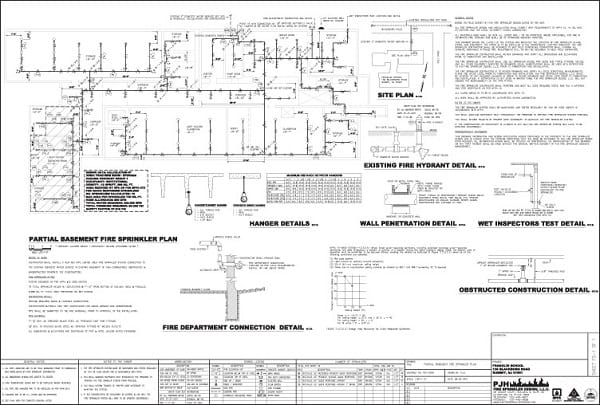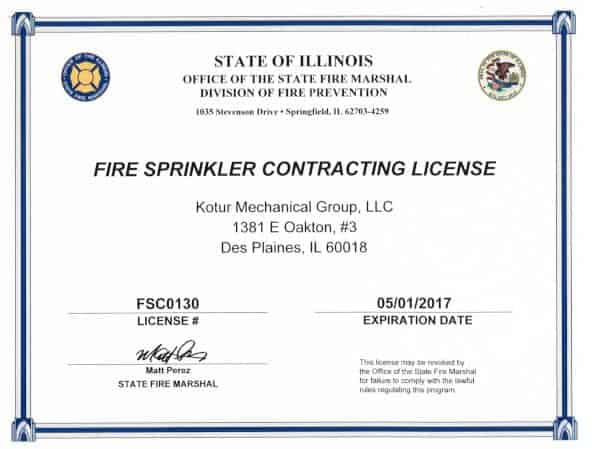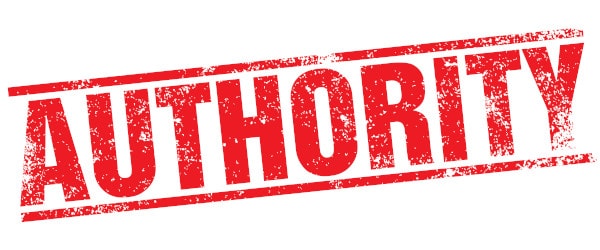NFPA says something is up to the AHJ … but when?
While reading National Fire Protection Association (NFPA) model codes and standards, you’ll often find phrases like “according to the authority having jurisdiction” or “acceptable to the authority having jurisdiction” or “can be obtained from the authority having jurisdiction.”
As we discussed in our article on fire marshals and other authorities having jurisdiction (AHJs), a number of private and public stakeholders fall under this label. Though fire marshals frequently wield broad authority over matters of fire protection and fire safety, they are not the only decision-maker.
AHJs whose decisions carry the force of law can be federal, state, county, or city officials and may include:
- Fire chiefs
- Fire marshals
- Labor departments
- Health departments
- Building officials
- Electrical inspectors
The Occupational Safety and Health Administration (OSHA), for example, issues mandates with some of the broadest authority in the country. And while you’ll usually deal with local government fire, electrical, and building officials for compliance issues, state officials issue the requirements if contractors need state permits.
Besides these government officials, private officials have a say in fire protection and safety matters because they have a financial stake and must exercise control. Examples of private AHJs may include:
- Insurance inspection departments
- Ratings bureaus
These AHJs cannot overrule the orders of government authorities, but they can require or incentivize different actions within the bounds of the law.
When should you contact your authorities having jurisdiction? With so many different stakeholders, knowing when exactly you need their approval gets complicated. In this article, we look at several common reasons to contact your authority having jurisdiction, including:
- When you are planning new construction or significant remodeling
- When you experience an impairment to a fire protection system
- To get a license or approval to work on fire sprinkler systems
- When you need answers to safety and design questions
- Finally, we’ll run through how to contact your AHJ.
When to contact the authority having jurisdiction—new construction and major modifications
For new construction or major alterations to a facility, the relevant AHJs have to review building and/or fire protection system plans and issue permits. The process varies, but some of the common officials involved include fire marshals, building code inspectors, plumbing inspectors, and electrical inspectors.
Once the installation of fire protection systems is complete, tests and inspections are often required. Both public and private AHJs can verify that fire protection equipment works as intended.
AHJs review plans and issue permits
Whenever you undertake construction or significant improvements to a building, you need permits from local authorities. AHJs often require permits for fire protection work to ensure that licensed professionals do the job, and it is up to code. Fire protection permits are just part of the larger permitting process that also includes building, plumbing, and electrical permits. For example, Dallas, TX, fire sprinklers fall under the “master permit” that is required before any work can begin.
Securing permits roughly follows this process:
- Architects and engineers finalize their plans
- The contractor submits plans and permit applications to the relevant authorities
- Plans are reviewed, and permits are issued
Architects and engineers often do not include fire protection systems in their plans; it is up to licensed fire protection companies to prepare and submit these documents. This is the case in Richardson, TX, for instance. Either way, work cannot go ahead without fire protection permits, if specific systems are required.

The offices that review fire protection plans and issue permits vary from place to place. Let’s continue to look at Texas, which offers a useful example of this diversity. In the aforementioned city of Richardson, for example, the fire department does this. In Harris County in the Houston area, a dedicated fire code division of the county engineering department reviews fire protection plans. In Dallas, the Building Inspection Department issues all permits.
AHJs document tests and inspections during construction
Just as building code officials inspect the foundations and framing during building construction, qualified and licensed installation, inspection, testing, and maintenance (ITM) personnel inspect and test new fire protection systems.
Initial post-installation tests include hydrostatic tests and fire pump flow tests. A review of equipment often occurs at the same time as these tests, which means that tests must be conducted before building construction is complete. Otherwise, finished ceilings and walls may hinder the inspection. For instance, the city of Little Elm, TX, says that “All piping, hangers, connections, or other components shall be visible from the walking surface” for inspections.
These tests are not usually conducted by a statutory AHJ, but the results will be viewed by them; the Texas Department of Insurance (which includes the State Fire Marshal’s office) says that “Upon completion of work, inspection and tests shall be made by the contractor’s representative and witnessed by an owner’s representative.” After tests are completed, documentation is kept by the contractor and the owner and submitted to approving authorities.
When to call the authority having jurisdiction—fire protection impairments
It’s important to notify AHJs and stakeholders in the event of any fire protection system deficiencies or impairments on new or existing systems. Deficiencies are qualified as non-critical or critical, depending on severity. And impairments are conditions, planned or unplanned, that fundamentally prevent a fire protection system from functioning in an emergency. Identifying one results in having to institute impairment procedures. And all serious issues should be fixed as soon as possible.
Learn more about classifying deficiencies and impairments.
Common sprinkler impairments include:
- Closed control valves
- Broken sprinkler heads that significantly impact coverage area
- Burst, corroded, disconnected, or otherwise broken pipes
As we discussed in our article on replacing fire sprinkler heads, several AHJs and other parties should be notified of an impairment. These include:
- The fire department
- Your insurance carrier, if applicable
- Your alarm company, if applicable
- The facility owner
- Facility supervisors
These stakeholders, particularly the statutory AHJs, will need to know the nature of the impairment, the timeline for its repair, and the safety procedures that will be undertaken in the meantime. The fire marshal or another authority may order special fire safety measures such as a fire watch. NFPA 25: Standard for the Inspection, Testing, and Maintenance of Water-Based Fire Protection Systems lists various emergency procedures for sprinkler system impairments:
From the 2017 edition of NFPA 25
15.5.2 Where a fire protection system is out of service for more than 10 hours in a 24-hour period, the impairment coordinator shall arrange for one of the following:
(a) Evacuation of the building or portion of the building affected by the system out of service
(b)* An approved fire watch
(c)* Establishment of a temporary water supply
(d)* Establishment and implementation of an approved program to eliminate potential ignition sources and limit the amount of fuel available to the fire
While these impairment procedures only need to be put in place when an impairment lasts for an appreciable amount of time (10 hours in 24 hours), it’s important for qualified ITM personnel to document and tag impairments and notify AHJs regardless. Tags indicate that that systems or components are removed from service, and both regulatory officials and first responders reference these statuses. In your records, you should keep track of what ITM work is done, who did the work, when it was done, and the outcome. Don’t forget to contact the relevant AHJs after you resolve an impairment.
When to call the authority having jurisdiction—licensing
Fire sprinkler systems and other fire protection equipment save lives, so it’s crucial that the people who install and maintain systems are well-qualified for the work. Fire marshals and other AHJs issue licenses for fire sprinkler installation, and these requirements vary by state or community. Installers should communicate with AHJs to get licensed and stay licensed. And facility owners and managers who need to hire fire sprinkler contractors can communicate with the AHJ to verify licenses, where they are required.

State authorities often issue licenses; this is the case in Texas and Washington State, for instance. However, cities can also require licenses; Philadelphia, PA, and Kansas City, MO are examples. A complete list of which states license fire sprinkler workers and which leave it up to local jurisdictions can be found in our article on finding a qualified sprinkler or standpipe contractors.
When to call the authority having jurisdiction—questions about fire protection
Reach out to AHJs for information, and if you have any questions about fire protection code and best practices. When we interviewed Captain Richard Dyer Jr., Interim Fire Marshal at the Richmond Fire Department in Virginia, he emphasized that his office is about teaching first—then, enforcement.
“The process for my staff here is: be educators first,” he explains. Contact your authority having jurisdiction so they can help you interpret code or resolve confusing situations.
You may also have to reach out to an AHJ about technical matters. For instance, if your building is in an earthquake-prone area, you may have to ask an AHJ about your area’s short-period response parameter needed for the design of seismic bracing systems, if it is not available elsewhere.
How to contact your AHJ
How do you get in touch with an AHJ to ask these questions? Unfortunately, there is no single answer because there’s no single AHJ. It shouldn’t be too hard to figure out who to call, however.
To contact a government AHJ, a good first step is to find your local government’s website and department directory. Sometimes, they may route questions to state departments. Insurers will also usually be able to assist with finding the appropriate contact.
The first place you should try is your local building office. Whichever office issues building permits or handles code enforcement in your city or county may be able to answer your fire protection questions. If they can’t, they can direct you to someone who can.
A relevant AHJ is also likely to be found at the local fire department. City and county fire marshals tend to be a part of local or regional fire departments. If that fails, try your individual insurance provider, state insurance department, or state fire marshal’s office. As mentioned, a directory of state fire code authorities is available in our blog about fire protection contractors.
Authorities having jurisdiction make sure fire protection codes, standards, and systems work together to protect people and property
Many individuals and agencies have authority over a building’s systems. Fire marshals, building code inspectors, electrical inspectors, and other groups have the legal power to issue permits, inspect structures, and enforce code. Insurance companies, owners, and other private organizations may also have authority through their financial stake in the property. In any case, understanding who has the power and how to get in touch with them will ensure that you comply with mandates.
QRFS writes about a range of fire code and fire protection technology issues. If you learned something from this article, our pieces on “Common Fire Code Violations from the Authority Having Jurisdiction (AHJ)” and “The 10 Most Common Fire Safety System Compliance Issues and How to Avoid Them” may be of interest.
If you have questions or need help finding fire protection equipment, call us at +1 (888) 361-6662 or email support@qrfs.com.
This blog was originally posted at blog.qrfs.com. Check us out at Facebook.com/QuickResponseFireSupply or on Twitter @QuickResponseFS.




I would like to purse my license with Fire alarms. Do I need to be working with a company that does Fire Alarms ?
I am a maintenace personnell for Crystal clinic. Would be ok to purse my Frie alarm license or certfication with Crystal clinic and be reconcised by the State or Local&city authories.
Tom – The requirements depend on your state (and perhaps city), and some jurisdictions call for exam-based licensing and on-the-job experience. Your best bet is to google your state along with “fire alarm technician license” to view the requirements or find contact information for your state’s professional licensing authority. Good luck!
I want to get Nfpa code 96 certification. What is the procedure?
Rubalpreet — you can check out NFPA’s online certification training options for NFPA 96 or there are various training organizations that offer courses and testing that you can find with a search engine (“NFPA 96 certification” or “hood-cleaning certification”). Otherwise, you can contact NFPA directly and ask them for the best options and procedures. They tend to be pretty helpful, in our experience. Best of luck!